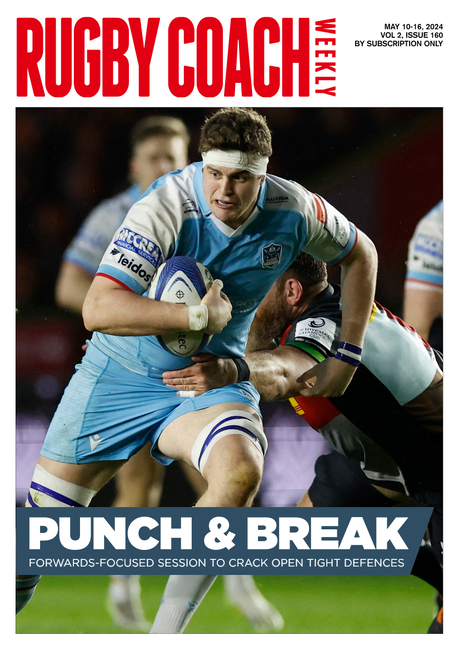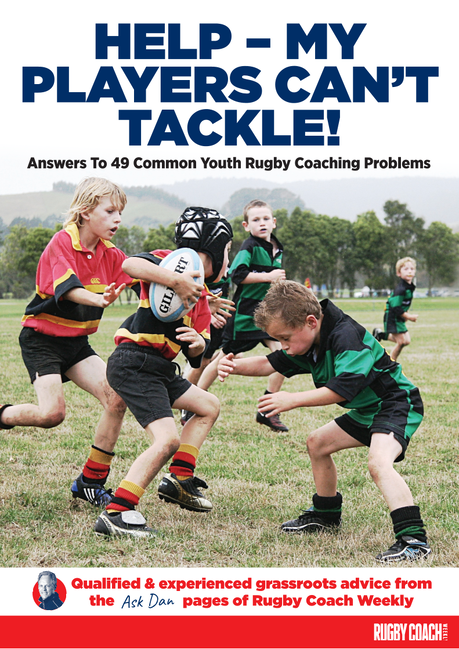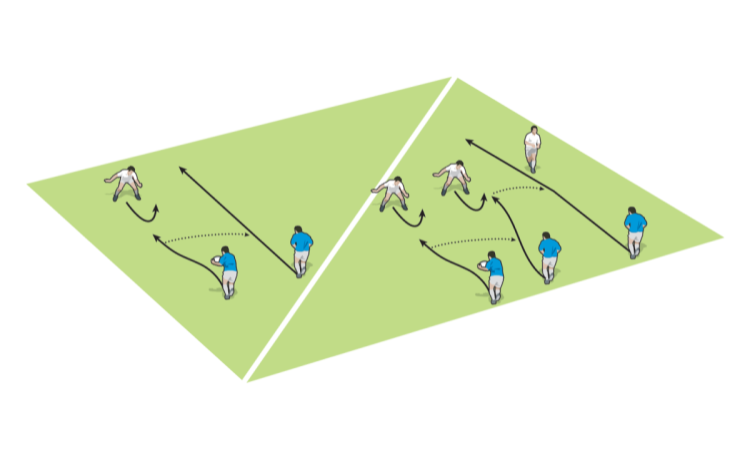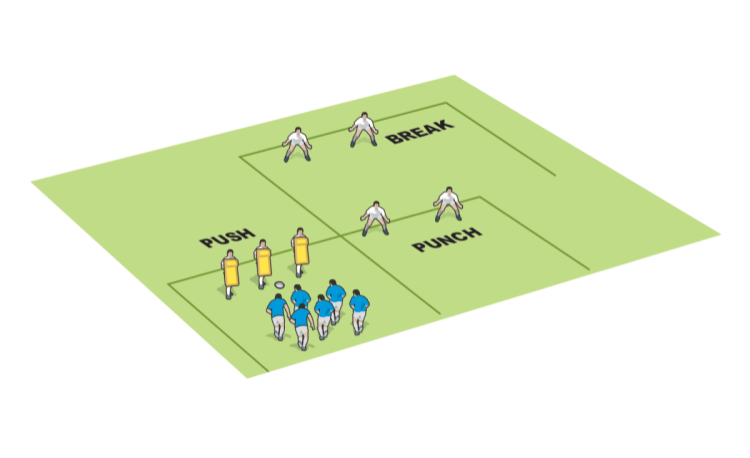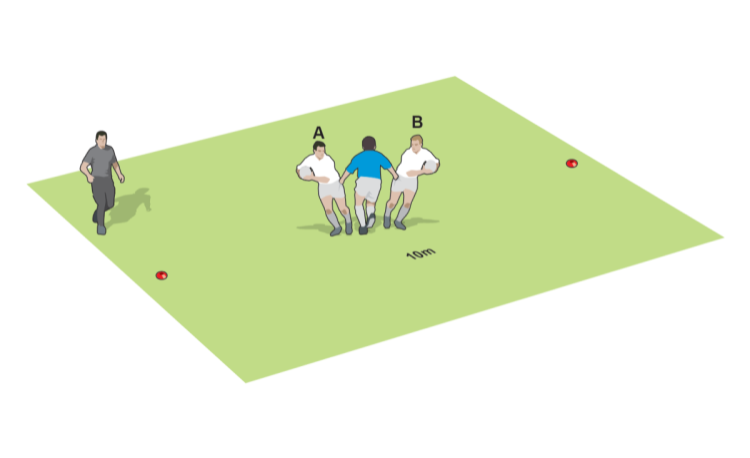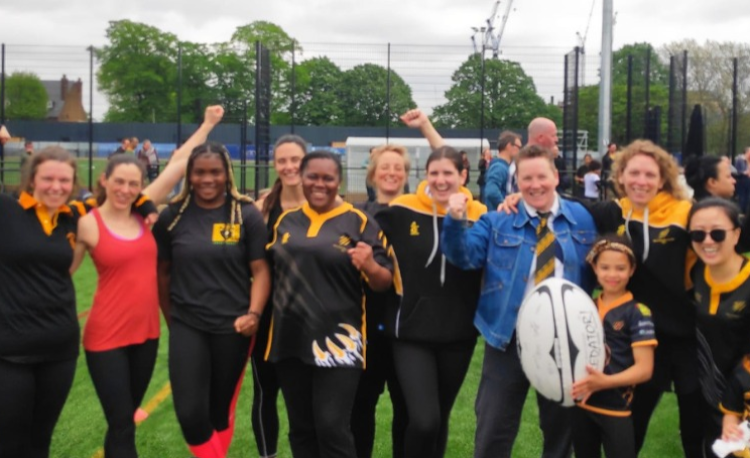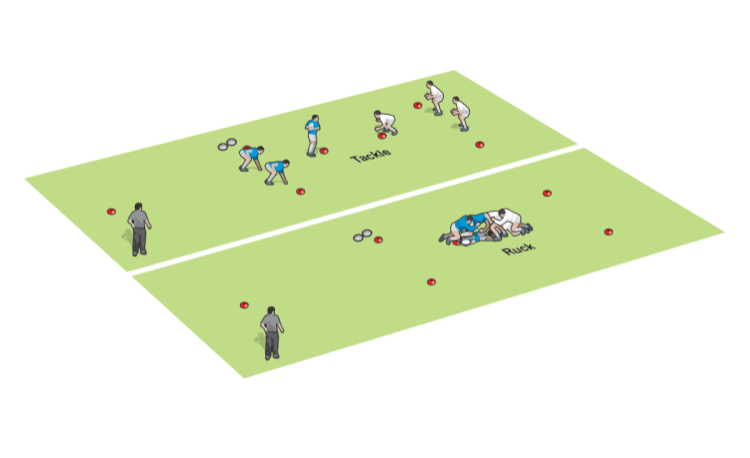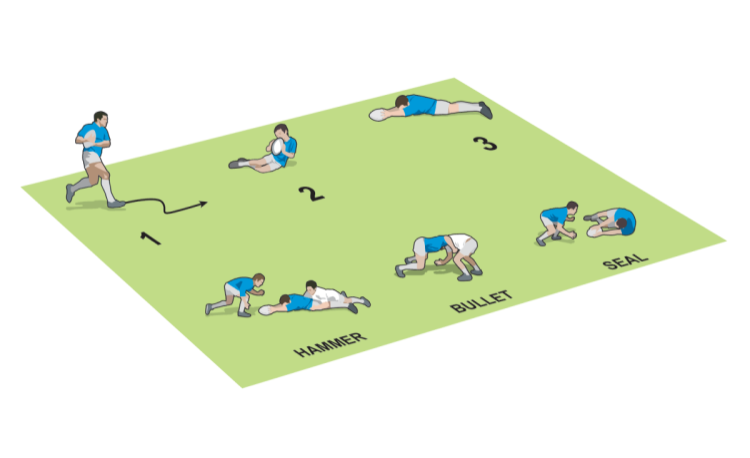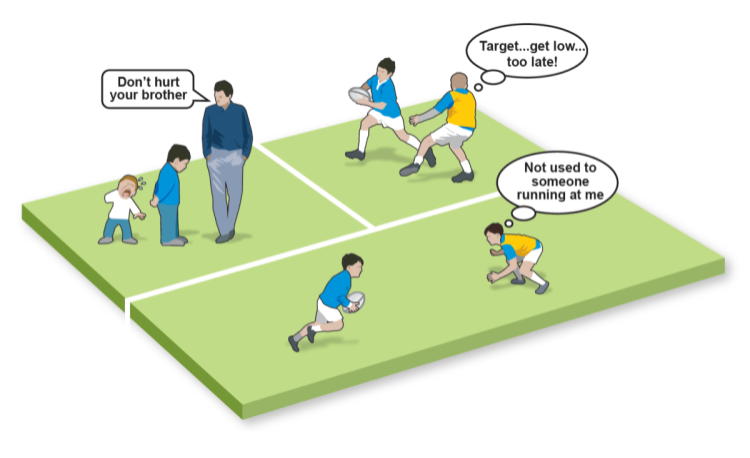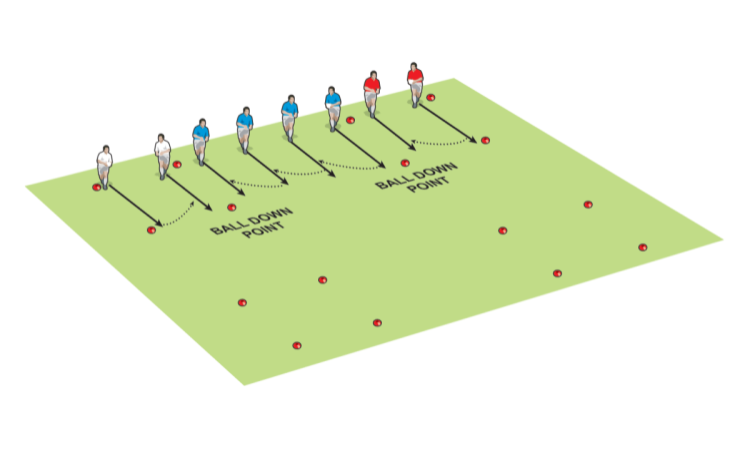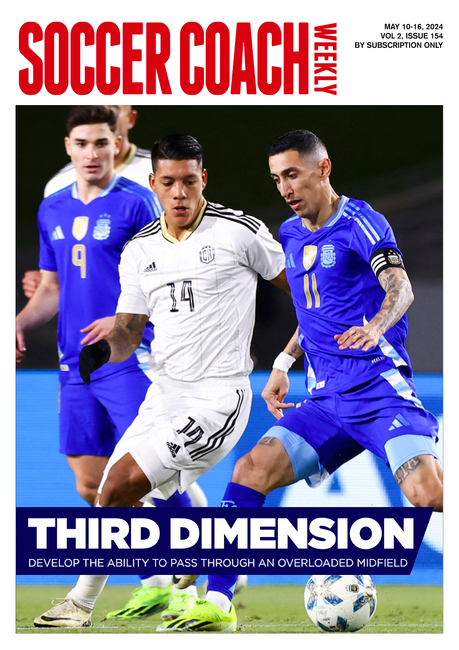You are viewing
1 of your 2 free articles
VIDEO: Chop tackle tech and drive
Contactby Liza Burgess
Help players develop their skills around completing a low "chop" tackle. Once the contact is made, the tackler has to recover and contest for the space over the ball.
The activity is clearly introduced with the key points, a demonstration and then the use of micro-coaching from the players to build a clearer understanding of their roles. It finishes with a small contact decision around jackling or competing for space.





The pad holder either
The activity is clearly introduced with the key points, a demonstration and then the use of micro-coaching from the players to build a clearer understanding of their roles. It finishes with a small contact decision around jackling or competing for space.
ACTIVITY

- Player 2 lies on the ground between two coloured cones. There's low tackle bag (or tube) about 2m in front of them.
- Player 3 stands behind the bag, holding a pad in two hands.
- Player 1 will act as the micro coach, encouraging player 2 to focus on the key skills.

- Call out a coloured cone.
- The prone player gets to their feet and touches that cone.

- That player then tackles the pad.
- Note that both feet are on the ground, there is a clear shoulder contact.
- The lower the contact the better.

- The tackler then recovers their feet ("speed to feet") and drives into the oncoming pad holder.
- Ideally, the tackler would be lower, bending at the knees.
- The micro coach can also encourage "leg drive", where the tackler keeps driving forward with powerful steps.
- The pad holder can lean forward, so the tackler has to drive up through the pad holder's chest.
DEVELOPMENT

The pad holder either
- Doesn't engage with the tackler. The tackler now has to stop at the end of the bag and then lift it as if they are going for the ball.
- Engages as they did in the original activity. Notice in the picture that the pad holder is leaning forward, forcing the tackler to get lower.
TECHNIQUE
- Get the feet close into the bag.
- "Speed to feet". Get back into the game quickly.
- Squeeze the tackle pad. Don't push with the arms and hands.
COACHING POINTS
- Simple, energised and clear instructions on what to do.
- A demonstration, which includes a coaching point.
- During the exercise, repetition of the key points, along with praise.
- Fault correction to the whole group.
- One development.
- Also, lots of emphasis on the "micro" coaches. This peer coaching is very powerful because it is individual as well as focusing that micro-coach on their own skills.
- This is an energised activity. The players are breathing hard. After the activity, use questions to check for understanding.
Premium Books
Newsletter Sign Up
Coaches Testimonials

Gerald Kearney, Downtown Las Vegas Soccer Club

Paul Butler, Florida, USA

Rick Shields, Springboro, USA

Tony Green, Pierrefonds Titans, Quebec, Canada
Subscribe Today
Be a more effective, more successful rugby coach
In a recent survey 89% of subscribers said Rugby Coach Weekly makes them more confident, 91% said Rugby Coach Weekly makes them a more effective coach and 93% said Rugby Coach Weekly makes them more inspired.
Get Weekly Inspiration
All the latest techniques and approaches
Rugby Coach Weekly offers proven and easy to use rugby drills, coaching sessions, practice plans, small-sided games, warm-ups, training tips and advice.
We've been at the cutting edge of rugby coaching since we launched in 2005, creating resources for the grassroots youth coach, following best practice from around the world and insights from the professional game.
More from us
© 2023 Rugby Coach Weekly
Part of Green Star Media Ltd. Company number: 3008779
We use cookies so we can provide you with the best online experience. By continuing to browse this site you are agreeing to our use of cookies. Click on the banner to find out more.

